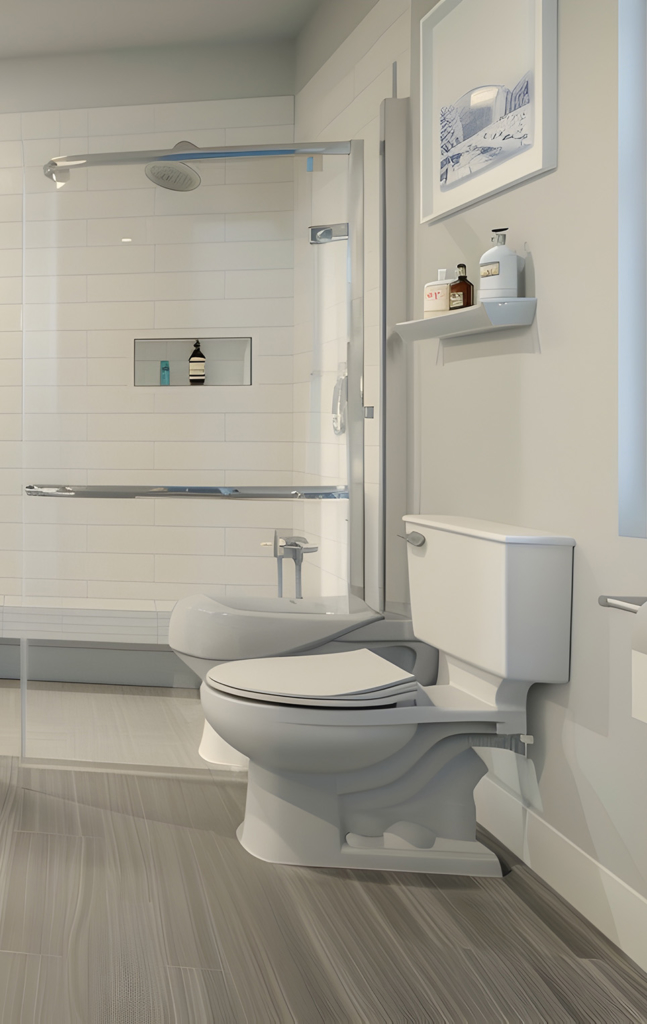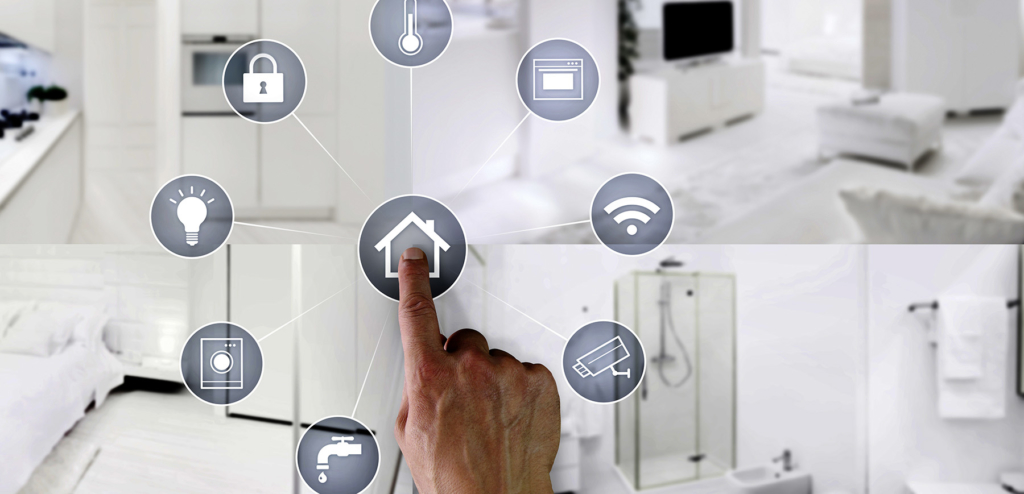If you are here, there is a good chance you are considering the best ways to continue enjoying the comfort and familiarity of your own home as you age. Here in Southern California, where the sun shines brightly and the community spirit is strong, many seniors like yourself are exploring the concept of “aging in place.”
Aging in place means staying in your own home and community as you grow older rather than moving to a retirement or assisted living facility. It’s about maintaining your independence, staying close to cherished memories, and continuing to be a part of the neighborhood you’ve called home for so many years.
We understand that this decision comes with its challenges, especially given the current housing market. Moving to a new place can be expensive, and with housing shortages, finding the right spot might seem overwhelming. Plus, there’s the emotional toll of leaving behind a place filled with decades of memories.
Imagine having to leave the house where you celebrated countless birthdays, holidays, and family gatherings. The thought of saying goodbye to friendly neighbors and familiar streets can be daunting. That’s why aging in place can be such a comforting option. It allows you to stay rooted in the community you love, surrounded by the sights and sounds that bring you joy.
In this guide, we aim to be your trusted resource, providing you with all the information and support you need to make aging in place a viable and comfortable choice. From practical home modifications to financial planning, health considerations, and community support, we’ve got you covered.
So, grab a cup of tea, sit back, and let’s explore how you can continue to thrive in the home you love. We’re here to help you every step of the way, ensuring your home remains a safe and welcoming haven for years to come.
Understanding Aging in Place
Definition and Key Principles
Aging in place is more than just a buzzword; it’s a commitment to living in the comfort and familiarity of your own home as you age. This approach focuses on maintaining independence, comfort, and a high quality of life. Aging in place involves adapting your living environment to meet your evolving needs, rather than moving to a new location or facility.

Emotional and Psychological Benefits of Staying in a Familiar Environment
There’s no place like home, and for many seniors, this saying holds a profound truth. Staying in a familiar environment offers numerous emotional and psychological benefits:
- Comfort and Security: Your home is a sanctuary filled with memories, from family gatherings to quiet moments of reflection. This sense of security and comfort is irreplaceable.
- Routine and Familiarity: Daily routines and familiar surroundings provide stability and a sense of control, which can be particularly important as we age.
- Community Connections: Maintaining close ties with neighbors and friends contributes to a sense of belonging and support. Your community is an invaluable network that can provide both practical help and emotional support.
- Mental Health: Staying in a beloved home can help reduce feelings of anxiety and depression that sometimes accompany major life changes. The continuity of living in the same environment promotes mental well-being and peace of mind.
In this guide, we’ll explore how to make aging in place a seamless and rewarding experience. By understanding the key principles, acknowledging the growing trend, and appreciating the emotional benefits, you’ll be well-equipped to make informed decisions about your future.
Stay with us as we take a closer look at the practical steps and resources available to support your journey of aging in place, ensuring that your home remains a safe, comfortable, and joyful place for many years to come.
Assessing Your Home for Aging in Place
Evaluating Your Current Home’s Suitability
The first step in preparing to age in place is to evaluate your current home’s suitability. This involves taking a thorough look at your living space and identifying areas that may need modifications to provide you with the safety and comfort you need. Ask yourself:
- Is my home easily accessible?
- Are there any potential hazards, like steep stairs or narrow hallways?
- Do I have enough lighting throughout my home?
- Are the kitchen and bathroom designed for ease of use?
Conducting a home assessment can help pinpoint specific areas that need attention, making it easier to plan necessary changes.
Essential Modifications for Safety and Comfort
Once you’ve assessed your home, the next step is to make essential modifications that will enhance your safety and comfort. Here are some key areas to focus on:
Bathroom: Walk-in Showers, Grab Bars, Anti-slip Flooring
The bathroom is a critical area to modify for aging in place. Consider the following changes:
- Walk-in Showers: Replacing a traditional bathtub with a walk-in shower can reduce the risk of falls and make bathing easier.
- Grab Bars: Install grab bars near the shower, bathtub, and toilet to provide extra support.
- Anti-slip Flooring: Use non-slip mats or install anti-slip flooring to prevent accidents on wet surfaces.
Kitchen: Easy-to-Reach Cabinets, Lever-Style Handles
The kitchen should be both functional and safe. Consider these modifications:
- Easy-to-Reach Cabinets: Adjust the height of cabinets and shelves to make frequently used items easily accessible, reducing the need for step stools or reaching high.
- Lever-Style Handles: Replace traditional knobs with lever-style handles that are easier to grip and use, especially for those with arthritis or limited hand strength.

General: Widened Doorways, Stairlifts, Improved Lighting
For overall home accessibility and safety, consider these general modifications:
- Widened Doorways: If you use a wheelchair or walker, widening doorways can make it easier to move from room to room without obstruction.
- Stairlifts: If your home has multiple levels, installing a stairlift can provide safe and easy access to upper floors without the risk of climbing stairs.
- Improved Lighting: Ensure that your home is well-lit, especially in hallways, staircases, and entryways. Use bright, energy-efficient bulbs and consider adding motion-sensor lights for convenience.
By making these essential modifications, you can create a safer, more comfortable living environment that supports your independence and well-being. Remember, these changes don’t have to happen all at once. Prioritize the most critical areas and gradually make improvements as needed.
In the next section, we’ll discuss financial planning and assistance options to help you budget for these modifications, ensuring that your home remains a secure and welcoming place for years to come.
Financial Planning and Assistance
Budgeting for Home Modifications
Planning and budgeting for home modifications are essential steps in making aging in place a reality. Start by identifying the changes needed in your home and estimating their costs. Here are some tips to help you budget effectively:
- Prioritize Needs: Focus on the most critical modifications first, such as bathroom safety or accessibility improvements.
- Get Multiple Quotes: Obtain quotes from several contractors to compare prices and services.
- Plan for Unexpected Costs: Set aside a contingency fund for any unforeseen expenses that may arise during the modification process.
Available Grants and Financial Aid
There are various grants and financial aid options available to help cover the costs of home modifications. These can significantly ease the financial burden and make aging in place more affordable.
Government Programs
Several government programs provide financial assistance for home modifications:
- Medicare and Medicaid: While Medicare typically does not cover home modifications, Medicaid may offer waivers or programs that do. Check with your state’s Medicaid office for specific details.
- Veterans Affairs (VA): If you are a veteran, the VA offers several grants, such as the Home Improvements and Structural Alterations (HISA) grant, the Specially Adapted Housing (SAH) grant, and the Special Home Adaptation (SHA) grant.
- USDA Rural Development: For seniors living in rural areas, the USDA offers grants and loans for home repairs and improvements through its Single Family Housing Repair Loans & Grants program.
Nonprofit Organizations
Numerous nonprofit organizations are dedicated to helping seniors age in place by providing financial assistance and support:
- Rebuilding Together: This organization offers free home repairs and modifications for low-income seniors to improve safety and accessibility.
- Habitat for Humanity: Some local Habitat affiliates have programs specifically aimed at helping seniors with home repairs and modifications.
- Area Agencies on Aging (AAA): These agencies often have information on local resources and programs that provide financial assistance for home modifications.
Cost Comparison: Aging in Place vs. Assisted Living Facilities
When considering the financial aspect of aging in place, it’s important to compare the costs with those of assisted living facilities. Here are some key points to consider:
- Home Modifications: The initial cost of home modifications can vary widely depending on the extent of the changes needed. However, many modifications are one-time expenses.
- Monthly Costs: Aging in place may involve ongoing costs such as in-home care services, but these can be less expensive than the monthly fees for assisted living facilities.
- Emotional and Social Value: Staying in your own home provides priceless emotional and social benefits, which can significantly enhance your quality of life.
Overall, while the upfront costs of home modifications might seem high, aging in place can be more cost-effective in the long run compared to the continuous expenses associated with assisted living facilities.
In the next section, we’ll discuss health and wellness considerations and explore how to access home healthcare services and stay active and healthy while aging in place.
Health and Wellness Considerations
Accessing Home Healthcare Services
Maintaining your health and wellness is crucial for successfully aging in place. Home healthcare services can provide essential medical and personal care support, allowing you to stay in your home safely and comfortably. Here’s how to access these services:

Local Providers
Southern California has a variety of local home healthcare providers offering a range of services, from medical care to daily living assistance. These services may include:
- Skilled Nursing Care: Nurses can provide medical care such as wound management, medication administration, and monitoring of chronic conditions.
- Physical and Occupational Therapy: Therapists can help you regain strength and mobility, as well as teach you how to perform daily tasks safely.
- Personal Care Aides: Aides can assist with bathing, dressing, meal preparation, and light housekeeping.
To find reputable providers, ask for recommendations from your doctor, local senior centers, or Area Agencies on Aging (AAA).
Telehealth Options
Telehealth has become an increasingly popular and convenient way to access healthcare services from the comfort of your home. Through video calls and online consultations, you can:
- Consult with Healthcare Providers: Speak with doctors, nurses, and specialists without needing to travel to an office.
- Receive Prescriptions: Get medications prescribed and delivered to your home.
- Monitor Health Conditions: Use remote monitoring devices to track vital signs and share data with your healthcare team.
Many healthcare providers now offer telehealth services, so check with your current doctors to see if this option is available.
Staying Active and Healthy
Staying active is key to maintaining your health and well-being as you age. Here are some ways to incorporate physical activity into your daily routine:
Home Exercise Programs
You don’t need to leave your home to stay fit. There are plenty of home exercise programs designed specifically for seniors:
- Online Workouts: Platforms like YouTube offer free exercise videos tailored to various fitness levels and interests, such as yoga, tai chi, and strength training.
- Fitness Apps: Apps like SilverSneakers and MyFitnessPal provide guided workouts and fitness tracking.
- Equipment-Free Exercises: Simple exercises like walking in place, stretching, and bodyweight exercises can be done without any special equipment.
Community Resources
Engaging with your community can provide additional opportunities to stay active and healthy:
- Senior Centers: Many local senior centers offer fitness classes, recreational activities, and wellness programs designed for older adults. These centers also provide a great way to stay socially connected.
- Fitness Classes: Check for community-based fitness classes such as water aerobics, dance, or chair exercises, often available at local gyms, YMCAs, and community centers.
By staying physically active and accessing the healthcare services you need, you can maintain your health and independence while aging in place. Remember, the goal is to create a routine that is enjoyable and sustainable, ensuring you stay active and healthy in the comfort of your own home.
In the next section, we’ll explore the role of technology in aging in place, highlighting smart home devices and communication tools that can enhance your safety and connectivity.
Technology and Aging in Place

Smart Home Technology for Safety and Convenience
Technology can play a pivotal role in making your home safer and more convenient as you age in place. Smart home devices are designed to assist with everyday tasks, enhance security, and provide peace of mind for you and your loved ones.
Medical Alert Systems
Medical alert systems are essential for ensuring help is always available in an emergency. These systems typically include wearable devices with a button that you can press to call for assistance. Here are some popular options:
- Fall Detection: Advanced medical alert systems come with fall detection technology, which can automatically alert emergency services if you fall and are unable to press the button.
- GPS Tracking: For those who are still active and mobile, systems with GPS tracking can provide location information, ensuring help can find you quickly.
Home Automation (Lights, Thermostats, Security Systems)
Home automation systems can significantly enhance the safety and convenience of your living environment:
- Smart Lights: Automated lighting systems can be programmed to turn on and off at specific times, ensuring your home is well-lit when you need it. Motion-sensor lights can also be installed in key areas to prevent trips and falls.
- Smart Thermostats: These devices allow you to control your home’s temperature remotely, ensuring a comfortable environment without the need to manually adjust settings.
- Security Systems: Smart security systems, including doorbell cameras, window sensors, and alarm systems, can help protect your home from intruders and provide peace of mind.
Communication Tools to Stay Connected with Family and Friends
Staying connected with loved ones is crucial for emotional well-being. Technology offers several tools to help you maintain strong relationships, even if you can’t be physically together.
Video Calling
Video calling platforms make it easy to see and talk to family and friends:
- Zoom: A popular option for group calls and virtual gatherings, Zoom is user-friendly and offers free plans.
- Skype: Skype is another reliable platform for video and voice calls, allowing you to stay in touch with loved ones around the world.
- FaceTime: If you use Apple devices, FaceTime is a seamless way to make video calls to other Apple users.
Social Media
Social media platforms can help you stay updated on family news, share experiences, and connect with friends:
- Facebook: Facebook is widely used by all age groups and offers various ways to stay connected, from messaging to joining interest-based groups.
- Instagram: While primarily a photo-sharing platform, Instagram allows you to follow family and friends and share your own moments.
- WhatsApp: This messaging app offers text, voice, and video calling features, making it easy to communicate with loved ones.
By integrating these smart technologies and communication tools into your daily life, you can enhance your safety, stay connected with loved ones, and enjoy greater convenience. Embracing technology can make aging in place not only feasible but also enjoyable.
In the next section, we’ll discuss the importance of building a strong community and support network, and how local services can assist you in your journey of aging in place.
Community and Support Networks

Building a Support Network
Having a strong support network is essential for successfully aging in place. A reliable network of family, friends, neighbors, and community groups can provide both emotional support and practical assistance, helping you maintain independence and a high quality of life.
Family and Friends
Your family and friends are often your closest and most reliable sources of support. Here’s how to strengthen these connections:
- Regular Communication: Stay in touch through regular phone calls, video chats, and visits. Open communication allows your loved ones to be aware of your needs and can provide timely help.
- Involvement in Daily Activities: Encourage family and friends to be involved in your daily life. Whether it’s helping with errands, joining you for meals, or simply spending time together, their involvement can make a big difference.
- Emergency Plan: Work with your family and friends to develop an emergency plan, including who to contact and what steps to take in case of an emergency.
Neighbors and Local Community Groups
Your neighbors and local community groups can also be valuable parts of your support network:
- Neighbors: Build strong relationships with your neighbors. They can provide immediate assistance, keep an eye on your home, and offer companionship. Consider joining or starting a neighborhood watch program to enhance community safety.
- Community Groups: Participate in local community groups, such as senior centers, clubs, and religious organizations. These groups offer social activities, support services, and a sense of belonging.
Local Services and Resources for Seniors
Numerous local services and resources are available to help seniors age in place comfortably and safely. Here are some key services to explore:
Transportation Services
Maintaining mobility is crucial for independence. Several transportation services cater specifically to seniors:
- Dial-A-Ride: Many communities offer Dial-A-Ride services, providing door-to-door transportation for seniors at a reduced cost.
- Public Transit Discounts: Check with local transit authorities for senior discounts on buses, trains, and other public transportation options.
- Volunteer Driver Programs: Some nonprofit organizations offer volunteer driver programs, where volunteers provide rides for seniors to medical appointments, grocery shopping, and other essential trips.
Meal Delivery Programs
Access to nutritious meals is vital for health and well-being. Meal delivery programs can provide you with regular access to balanced meals:
- Meals on Wheels: This well-known program delivers hot meals to seniors at home, ensuring they receive nutritious food regularly.
- Senior Meal Programs: Local senior centers and community organizations often offer meal programs, including congregate meals and home-delivered options.
- Grocery Delivery Services: Many grocery stores and online platforms provide grocery delivery services, allowing you to order food and have it delivered to your doorstep.
By building a strong support network and utilizing local services, you can improve your ability to age in place with confidence and security. These connections and resources provide you with the help and companionship you need to live independently and happily in your own home.
In the final section, we’ll explore legal and administrative aspects, ensuring that all necessary documents and plans are in place for a smooth and worry-free experience of aging in place.
Recap of the Benefits and Feasibility of Aging in Place
Aging in place offers a multitude of benefits, allowing you to remain in the comfort and familiarity of your own home while maintaining your independence and quality of life. By making essential home modifications, accessing healthcare services, leveraging technology, and building a strong support network, you can create a safe and enjoyable living environment. Financial planning and utilizing available resources further enhance the feasibility of this option, making it a practical and appealing choice for many seniors in Southern California.
Encouragement and Reassurance for Seniors Considering This Option
Choosing to age in place is a significant decision, but it’s one that comes with many rewards. The emotional and psychological benefits of staying in a familiar environment, surrounded by cherished memories and community connections, cannot be overstated. With the right planning and support, you can continue to live comfortably and confidently in your own home.
Remember, you are not alone in this journey. There are numerous resources, services, and people ready to assist you in making aging in place a positive and successful experience. Take each step at your own pace, and know that help is always available when you need it.
Contact Us for More Information and Personalized Assistance
If you have any questions or need further assistance with aging in place, don’t hesitate to reach out. As a senior real estate specialist, I’m here to provide you with personalized support and resources tailored to your unique needs. Whether you need help assessing your home, finding financial assistance, or connecting with local services, I’m here to guide you every step of the way.

